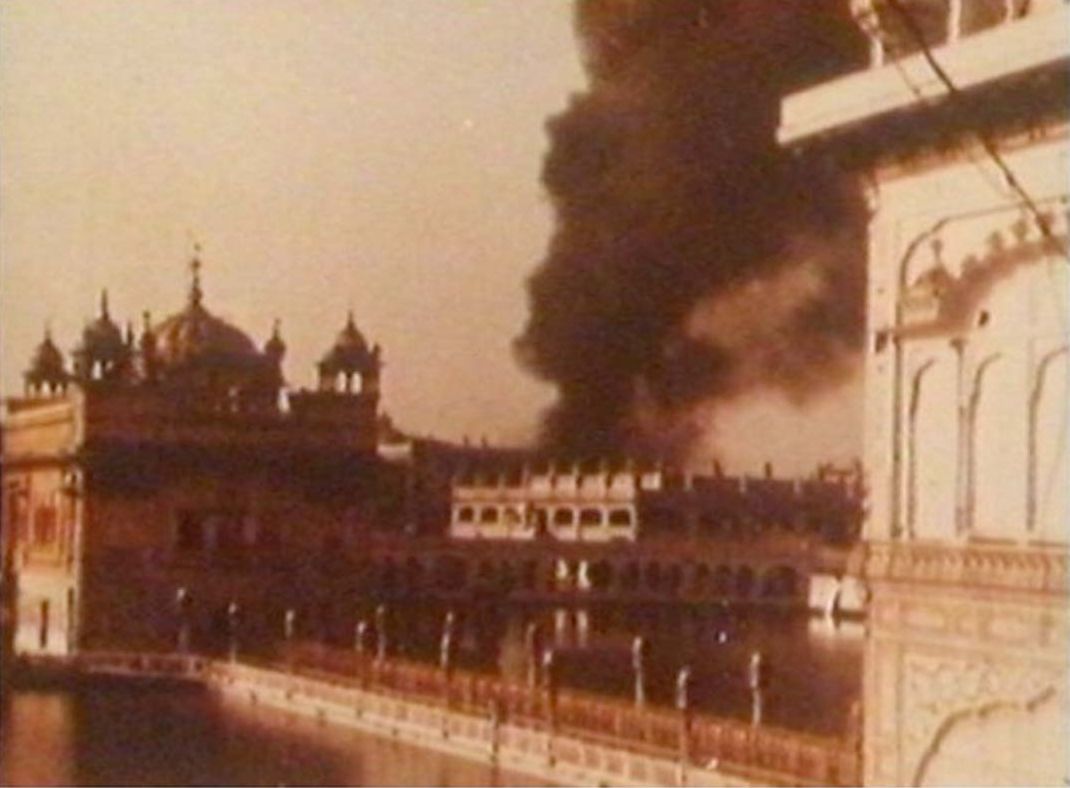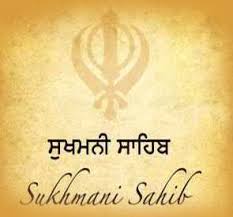
AKÂL USTAT (In Praise of the Timeless Being) is a poetical composition by Gurû Gobind Siṅgh Ji in the Dasam Granth. This is the only major composition in the Tenth Master's Book which is without a title. The title by which it is known is made up of its first word, Akâl (The Timeless One), and its last word, Ustat (praise).
In the beginning is the note: utar khâse daskhat kâ Pâtshâhî 10 (a copy of the Tenth Gurû's own handwriting). After four lines comes the next note: âgai likhârî ke daskhat (henceforth is the scribe's writing). This shows that in the original text the first four lines were written in the Gurû's own hand.
The bâṇî comprises 271 verses excluding the first four lines. Twelve different metrical measures have been used. The language of Akâl Ustati is Braj Bhâṣâ written in Gurmukhî characters. The dates given for its composition are1 684 for the opening section, and 1691 for the remainder. Its final compilation came much later, about 1735, when Bhâî Manî Siṅgh prepared the first copy of the Dasam Granth.
The main theme of the poem is praise of the Timeless Eternal Being. In the opening invocation, God is addressed as Timeless Being, All-Iron, "the personification and source of chivalry. " He also is the Transcendent "Being, distinct from all the world" (verse 9). Ten savaîyyâs follow. These four-line verses warn that religious books and rites, rigorous asceticism or worldly pomp and power are useless without the love and favour of God (verses 21-30). The great God Hari is described at length in transcendent terms as the Omnipotent Creator and Sustainer of the universe. Austere ascetic feats, ceremonies, pilgrimages are performed by devotees everywhere, but the conclusion is:
Know that all such things are vain,
And that all such devotion is fruitless,
Without the support of the One Name,
Deem all religious ceremonies as superstition.
(verses 31-50)
Then God's omnipresence is sung, " Thou art in the earth, Thou art in the firmament, " ending in a burst of devotional fervour when "Tû hî! Tû hî! (Thou alone art)" is repeated 16 times (verses 69-70). In the midst of another long portrayal of true and false conception of God, the unity of mankind before the Creator is thus emphasized :
He is in the temple as He is in the mosque;
He is in the Hindu worship as He is in the Muslim prayer
Men are one though they appear different. . .
The Hindus and the Muslims are all one,
Have each the habits of different environments,
But all men have the same eyes, the same body. . .
Thus the Abhekh of the Hindus and the Allah of the Muslims are one,
The Qura'n and the Purâṇas praise the same Lord.
They are all of one form,
The One Lord made them all.
(verse 86)
About a third of the poem is a satire on false methods of worship; but it is satire with the kindly purpose of showing that true praise is an inner state consisting of heartfelt devotion to the One Supreme Creator. Satire, then, is the means to carry out the divinely given mission. Then God is again described mostly in negative terms (verses 91-200) and is to be found, not by austerities, but by worship of Him as the Treasury of Grace (verse 59), for God is Love, Holiness, Virtue, and Omnipotence (verse 172). A series of questions and riddles much in the nature of a religious catechism follow (verses 201-10).
The final section is a veritable paean of praise. People the world over are included, as the Gurû mentions, among the seekers after God, the people of Arabia and of France, the Qandahârîs, the Qureshîs, the Westerners, the Marâṭhâs, the Bihârîs, the Oṛiyâs, the Beṅgâlîs, the English, the residents of Delhi, the Gurkhâs, the Chinese, Manchurians, Tibetans, the Easterners of Kâmrûp and Kumâûṅ - all these were blessed as they sang the praises of the One Lord (verses 254-71).
In Oriental imagery His praise is likened to milk, buttermilk, moonlight on the Yamunâ, crystal mirrors, swans, cranes, the Ganges, until finally:
His splendour appeareth everywhere,
He is the treasury of favour,
His light dazzleth, His glory is perfect.
The sky and the earth repeat His Name.
(verse 271)
The Gurû commences his great work on praise with an invocation to the All-Iron, i. e. God. He ends with the hope of human brotherhood as men throughout the world seek the One God and sing His praises.
The Ustati overflows with many of the oft-quoted verses and stanzas of Gurû Gobind Siṅgh. It presents a mixture of devotional lyrics and philosophical reflections. It is composed in a style which is a blend of grandeur and beauty. Diction and style of Gurû Gobind Siṅgh are unique : no resemblance of these is available in Hindi or Punjabi literature. The main source of his vocabulary, in this text, is Sanskrit, though in some of his other compositions the Gurû has made free use of Perso-Arabic words. He uses Sanskrit words in their tadbhav form and has experimented with formation of new words and compounds. Akâl Ustati, like the Jâpu, is a treasury of adjectival vocabulary.
Many of these adjectives are of fresh coinage. A rich variety of poetic metres has been used. Some of the metres like kabitt, savaîyyâs and dîrgh narâj are characterized by lengthy verse-forms, while some others like tomar and pâdhaṛî by short ones consisting of no more than two or three words.
BIBLIOGRAPHY
1. Loehlin, C. H. , The Granth of Guru Gobind Singh and the Khalsa Brotherhood. Lucknow, 1971
2. Ashta, Dharam Pal, The Poetry of the Dasam Granth. Delhi, 1959
3. Padam, Piârâ Siṅgh, Dasam Granth Darshan. Patiala, 1968.
4. Jaggî, Rattan Siṅgh, Dasam Granth Parichaya. Delhi, 1990











